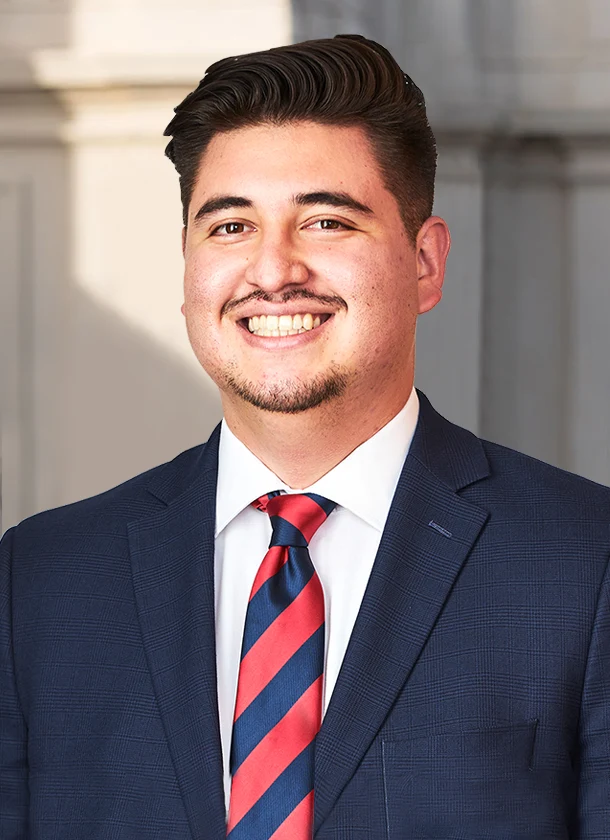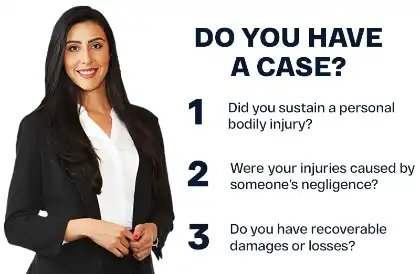California Moped Accident Attorneys
- PAY NOTHING UPFRONT
- OVER $0 MILLION RECOVERED
- ZERO-FEES UNTIL WE WIN
We’ll tell you if you have a case or not, call (888) 488-1391 — We’re here 24 hours a day.
Our California Moped Accident Attorneys Are Advocates Who Stand By Your Side
Mopeds and other motorized scooters serve as an inexpensive and eco-friendly means of transportation in California. However, similar to bicycles, they provide minimal protection to riders. Scooter accidents can lead to severe injuries even if the driver is wearing a helmet. In the event of an injury resulting from a moped accident anywhere in the state, it may be helpful to consult qualified California moped accident attorneys. Contact Arash Law at (888) 488-1391 to schedule your case review.
The increase in moped accidents in California correlates with the introduction of scooter-sharing programs by companies like Bird Rides, Inc., LimeBike, and Spin across the state. After a moped scooter accident that leads to injuries, individuals have the right to seek legal guidance regarding potential claims.
Moped accidents can affect operators, pedestrians, bicyclists, and motorists, causing injuries such as head trauma, fractures, cuts, and sprains. Identifying responsible parties in scooter accident cases depends on the specifics of each incident, including negligent scooter operators, drivers, pedestrians, and scooter manufacturers in product liability cases.
Moped accident attorneys can assist in initiating legal action, gathering evidence, filing claims with insurers, and coordinating with medical providers. Their role is to help injury victims understand their legal options and navigate the claims process.
What Is The Role Of Moped Accident Lawyers In California?
Moped accident attorneys play a crucial role in personal injury claims. Their key role is to provide legal assistance to clients in these cases. Lawyers can also help victims receive appropriate medical attention and can coordinate ongoing medical care with doctors as needed.
Moped accident lawyers can conduct a thorough investigation of the incident and gather evidence to determine potential negligence or wrongful actions by other parties. Additionally, attorneys at Arash Law can prepare and send a demand letter to the party responsible for the crash. This letter communicates the victim’s intention to pursue a personal injury claim with the at-fault party’s insurance company.
If a claim faces challenges, personal injury attorneys handling moped accident cases can file a lawsuit on behalf of the victim and assist with navigating the litigation process. Legal claims often require time and careful examination of complex laws, and attorneys can interpret and manage these processes on behalf of their clients.
Choosing The Right California Moped Accident Lawyers For Your Case
Selecting the right moped accident attorneys is more than just receiving legal advice; it’s about finding support during this challenging period. But how do you make the choice?
With many personal injury attorneys available, the options can feel overwhelming. Here are some steps to consider when looking for California moped accident lawyers:
- Get a Referral — Start your search within your network. If you are a rider, you may know others who have experienced accidents. Ask about their experiences, the attorneys they worked with, and whether they would recommend them. This can help you identify lawyers who have handled similar situations.
- Ask About Their Experience Handling Moped Accidents — Not all personal injury attorneys have experience with moped accidents. Seek someone who routinely handles moped or scooter cases. Ask about the number of cases they have managed in the past year to understand their familiarity with the specifics of these accidents.
- Review Their Track Record — Look into the attorney’s history with scooter and moped cases. Ask about the types of cases they have handled, including those resolved outside of court and those that went to trial. It is helpful to know if they have experience with both settlements and courtroom proceedings.
- Find Out If They Work on a Contingency Fee Basis — Many personal injury attorneys work on a contingency fee basis, meaning payment is only due if they recover compensation for the client. During your consultation, confirm the fee structure. Clear discussion about fees helps set expectations.
- Ask About Their Communication Schedule — Moped accident cases can take time to resolve. Ask how frequently the attorney provides updates and how you can reach them with questions. Make sure their office setup supports clear and accessible communication.
How Our Moped Accident Lawyers Can Help
Our California moped accident attorneys are committed to every case they handle. Here’s what we offer:
- Experience in Motorized Vehicle Cases — We handle injury claims involving mopeds, scooters, electric bikes, skateboards, and other small motorized vehicles. Our attorneys are familiar with common causes, including distracted driving, drowsiness, aggressive driving, road rage, drunk driving, and speeding.
- Comprehensive Legal Support — We can manage all communications with insurance companies and clarify the claims process. Our team explains legal options and potential courses of action so you can make informed decisions throughout your case.
- Insight Into Injury Types — We understand the range of potential injuries, from fractures and soft tissue injuries to more serious outcomes like spinal cord injuries, traumatic brain injuries, or catastrophic injuries. Our lawyers can connect you with qualified doctors for injury diagnosis and treatment.
- Assistance With Evidence Gathering and Documentation — Attorneys can help gather necessary information about the incident, review accident details, and guide you through paperwork or claims submissions.
Arash Law’s personal injury lawyers aim to provide professional guidance and support to help clients manage their cases after an accident. Speak with an attorney to discuss your situation and learn more about your potential legal options.


What Is The Difference Between Mopeds And Scooters?
Mopeds, defined as two-wheel motorized bicycles, have a maximum speed of about 30 mph and an engine capacity of up to 50cc. What sets them apart from other two-wheeled vehicles is the inclusion of pedals. Mopeds feature pedals that aid in starting the engine and allow riders to use the vehicle as a conventional bicycle when necessary. While some states consider the presence of pedals a crucial characteristic, others focus solely on the engine displacement, requiring it to be less than 50cc.
Scooters, on the other hand, are two-wheel vehicles distinguished by their step-through chassis and frames on the sides where drivers can place their feet. The engine power of scooters typically ranges from 50cc to 250cc, with variations in maximum speeds depending on the model. While scooters generally achieve a max speed of 80 miles per hour, certain models with larger engines can generate more power.
The primary distinction between a moped and a scooter lies in engine size, technically called engine displacement. Engine displacement is measured in cubic centimeters, and mopeds possess substantially smaller engine displacement compared to scooters. The engine size directly influences the maximum speed attainable by these vehicles, and due to their significantly smaller engines, scooters have a notably lower maximum speed.
Are Mopeds Dangerous?
Amidst the widespread adoption of motorized two-wheel rides in major American cities, a concerning increase in injuries has come to light. While a significant number of individuals use the mopeds daily without incident, there have been documented fatalities, particularly in states like California and Texas.
Distracted driving, especially involving cell phone use, has been a significant factor in moped accidents. The inherent danger of motor-powered bikes stems from their limited capacity to protect riders in the event of collisions, falls, or encounters with road obstacles. Additionally, a notable portion of scooter riders opt not to wear helmets, heightening the risk of severe brain injuries following a fall or accident.
Risks Associated With Riding A Moped
The widespread availability of mopeds doesn’t necessarily equate to safety. Mopeds and e-scooters present distinct challenges on the streets, particularly amid heavy traffic or poorly maintained roads. These road-related challenges elevate the risk of collisions involving motor vehicles and other potential obstacles and pose threats to pedestrians and motorists alike.
Even seemingly simple routines like executing a left turn or evading a pedestrian can lead to severe injuries, including broken bones or head trauma, when speeding. Despite initially perceiving these rides as enjoyable, they frequently result in serious consequences. Beyond the inherent dangers of riding mopeds, haphazardly parking them contributes to safety hazards, leading to slips and falls, bike accidents, and other incidents.
If you’re a moped rider who suffered injuries due to someone else’s negligence, it is imperative to consult with moped accident attorneys. Legal counsel can help you understand your options, manage paperwork, and navigate the claims process related to medical bills, lost work, or other impacts from a scooter accident.
Rules For Moped Operators And Drivers In California
Individuals operating mopeds, motorized bicycles, and motorized scooters in California are obligated to exercise responsible driving practices. Given that these vehicles are motor-powered and not propelled by pedals or feet, they fall under the classification of motor vehicles. Operators must adhere to traffic laws and comply with all signage and traffic directives while driving.
Riders must avoid using sidewalks with their mopeds or e-scooters to prevent pedestrians from being injured. Yielding to pedestrians and following instructions provided by law enforcement directing traffic is mandatory. Additionally, operating a moped under the influence of intoxicants is strictly prohibited. Those found doing so can be held accountable for any resulting injuries, including possibly facing punitive damages.
When an individual responsibly operates a moped, other drivers must acknowledge and share the road, recognizing the moped as a legitimate vehicle. Instances of aggression towards mopeds from drivers of cars, trucks, and SUVs constitute negligent behavior. Riders on mopeds or motor scooters are particularly vulnerable, and any collision with a larger vehicle can lead to severe injuries. After sustaining injuries, victims may consult moped accident attorneys in California to explore options for pursuing compensation for medical expenses and lost income.
California Motorcycle License Requirements
The California Department of Motor Vehicles (DMV) has established licensing and registration guidelines for various motorized vehicles, including motorcycles, motor-driven cycles, mopeds, motorized bicycles, and motor scooters. As outlined by the DMV:
- Moped — A moped is a two- or three-wheeled vehicle with a maximum speed of 30 mph. An M1 or M2 motorcycle license is required for the driver.
- Motorcycle — A motorcycle is characterized by an engine larger than 150 cc and no more than three wheels. Motorcycles must be registered, and the driver must possess an M1 motorcycle license.
- Motor-Driven Cycle — A motor-driven cycle features a 149 cc or smaller engine. It must be registered, and the driver must hold an M1 motorcycle license.
- Motorized Bicycle — A motorized bicycle has pedals and an electric motor of not more than 1,000 watts, with a maximum speed of 20 mph. Operators must be at least 16 years old and wear a bicycle helmet. A motorized bicycle is exempt from motor vehicle financial responsibility, driver’s license, and license plate requirements. They are issued a special license plate and identification card, with a one-time fee and no renewal necessary.
- Motor Scooter (Motorized Scooter) — A motor scooter, or motorized scooter, is a two-wheeled vehicle featuring a motor, handlebars, and a floorboard for standing while riding. This is not subject to registration; it may be driven with a driver’s license of any class.
Laws Governing Driving Mopeds In California
Gaining a comprehensive understanding of the legal framework governing mopeds in California is imperative, whether you are a frequent rider or contemplating using one. Riders of mopeds are obligated to wear helmets and possess an official driver’s license or learner’s permit.
In Los Angeles, strict enforcement of these rules is in place to uphold safety, particularly in pedestrian-heavy areas. These regulations are equally applicable whether you are riding a personally owned scooter or utilizing popular scooter-share programs.
Mopeds must adhere to bike lanes whenever possible, and if unavailable, they are permitted on roads with speed limits under 25 mph. However, riding on sidewalks is strictly prohibited, except when parking the scooter.
Beyond ensuring personal safety amidst motor vehicle traffic, adherence to these laws significantly influences the determination of liability in the event of an accident. The absence of a legal mandate for most e-scooter riders to carry liability insurance further complicates matters post-accident involving motorized scooters. Understanding regulations before using a moped is not solely about avoiding fines but is crucial for safeguarding rights. Additionally, government agencies could be held accountable for accidents resulting from poorly maintained roads or faulty infrastructure.
If you need more clarification on these laws, our moped accident attorneys at Arash Law can answer your questions.
California categorizes mopeds as Type CVC 406 vehicles, and two distinct codes outline the specifications for this vehicle class.
Under Requirement 406(a), the criteria for high-powered mopeds are outlined:
- The vehicle must feature a motor generating no more than two brake horsepower.
- The vehicle must be operable through pedals and/or a motor.
- The vehicle must be equipped with an automatic transmission.
- The vehicle’s maximum speed is capped at 30 mph, including instances where the driver pedals and utilizes the motor simultaneously.
Additionally, this code mandates that drivers of high-powered mopeds obtain special license plates and identification cards, which must be procured from the DMV to be considered valid. It is important to note that this requirement for special moped licensing solely applies to high-powered moped variants.
Requirement 406(b) outlines the characteristics of lower-powered mopeds:
- The vehicle’s motor should produce a maximum of 1,000 watts of power.
- The maximum speed of the vehicle is limited to 20 mph, even when both the motor and pedals are engaged.
Unlike high-powered mopeds, low-powered mopeds do not need special license plates or identification. Additionally, the state does not mandate registration or insurance for these vehicles. However, riders must be at least 16 years old to operate a moped.
For riders owning a 406(a) classified moped, registration with the DMV and obtaining an M1 motorcycle license are mandatory. Drivers aged 18 and above must fulfill specific requirements:
- Complete an approved California Motorcyclist Safety Program (CMSP) or pass a driving test.
- Successfully completed a written test at the DMV.
- Complete their application form.
- Pass a vision test.
For drivers under 18, additional requirements apply:
- Possess their driver’s permit for at least six months.
- Complete both driver’s education and driver’s training courses.
- Complete a CMSP course.
- Complete a motorcycle rider training course akin to driver’s training.
The DMV mandates that riders under 18 fulfill all available driver and motorcycle training forms. This comprehensive approach aims to ensure the safety of both the moped rider and the public when operating the vehicle.
California Scooter-Sharing Programs
Scooter-sharing programs have become familiar on the streets of Los Angeles and across California, with innovative services such as Spin, Lime, or Bird electric scooters offering an eco-friendly transportation alternative to residents.
With the help of a smartphone app, riders can quickly locate and unlock scooters around town by scanning a QR code. The functioning of these share programs is centered around encouraging riders to pick up electric scooters from public spaces left by previous users and leave them at their destination for the following user.
How To Maintain Safety With Shared Electric Scooters
Prioritizing safety is vital when riding shared electric scooters in busy pedestrian areas or alongside bike lanes in the presence of motor vehicles. Indeed, numerous accidents involving e-scooters stem from road hazards that may not be immediately evident to inexperienced riders. This shows the importance of proper education about potential risks before riding an e-scooter.
Before riding these motorized scooters, it is crucial to meticulously review the user agreement accessible through each company’s smartphone app. This document furnishes valuable insights into safe operating procedures and specifies expectations for responsible usage. Adhering to these guidelines is instrumental in preventing mishaps, such as sudden left turns without signaling or reckless speeding.
However, this model introduces unique challenges, particularly when determining responsibility in the event of moped and electric scooter accidents. Questions about who should be held accountable in a Bird or Lime scooter accident lawsuit may arise. In such instances, California moped accident attorneys can assess your case and determine whether you are eligible to pursue legal action.
What Are The Common Causes Of Moped Accidents?
Similar to auto accidents, scooter crashes result from various causes, including defective parts and inadequately maintained roadways. Some of the most common contributors to moped and other scooter accidents include:
- Motorist Error — Operating a low-profile vehicle, such as a moped, bicycle, scooter, or motorcycle, poses inherent dangers. Drivers often overlook mopeds in traffic due to their compact size. The enhanced maneuverability of mopeds can lead automobile drivers to lose track of their position alongside the car. On California streets, moped riders must operate under the assumption that they are unseen by car drivers.
- Reduced Visibility — Moped accidents are more likely when visibility is compromised, such as during dusk, heavy traffic, or obstructed settings.
- Driving Under the Influence — Given the susceptibility of moped riders, collisions with drivers under the influence can be fatal. Wearing a helmet, opting for reflective or bright clothing, and remaining vigilant for erratic drivers are essential safety measures when riding a moped or scooter.
In addition to these scenarios, moped operators risk serious injuries in accidents involving other mopeds, scooters, pedestrians, motorists or motor vehicles (including Lyft and Uber drivers), bicyclists, and motorcyclists.
If you’re injured in a moped accident because of another person’s carelessness, our moped accident attorneys in California can assist you. Fill out our “Do I have a case?” form to find out whether you have a valid claim.

What Are The Common Types Of Moped Accidents And Injuries?
As per a study published in the Journal of the American Medical Association (JAMA), common injuries in scooter accidents include:
- Fractures — Breaks or cracks in bones, often caused by trauma or excessive force.
- Head Injuries — Damage to the head, ranging from mild concussions to severe traumatic brain injuries (TBI), typically resulting from impact or sudden movement.
- Contusions — Bruises or areas of injured tissue caused by blunt force, resulting in localized bleeding and discoloration.
- Sprains — Injuries to ligaments, the tissues connecting bones, often caused by sudden stretching or tearing.
- Lacerations — Deep cuts or tears in the skin or other tissues, commonly caused by sharp objects or trauma.
Riders may sustain injuries in crashes caused by device malfunctions or road hazards. Common road hazards include potholes, litter, sticks, and branches. Furthermore, pedestrians are susceptible to moped-related injuries if they collide with a moped.
If you’ve sustained injuries in a scooter accident, it is crucial to seek medical attention promptly. While certain injuries may resolve independently, others may require treatment from a qualified medical professional. While our moped accident attorneys handle legal matters involved in your claim, you can focus on your recovery.
What Should I Do After A Moped Accident In California?
Taking immediate action at the scene can preserve crucial evidence and strengthen your legal case. Here’s a step-by-step guide on actions to consider after a moped accident:
- Obtain the Other Driver’s Information — Gather information from all involved drivers, including names, license numbers, phone numbers, vehicle registrations, and plate numbers. This information proves valuable when interacting with your insurance company.
- Contact the Police — Call the police to create a police report, which can be a crucial element for your claim.
- Collect Witness Information — Gather details from witnesses who observed the accident or saw you riding responsibly before the incident. While a formal statement isn’t necessary, obtaining each person’s name and contact information is important.
- Capture Photos and Videos of the Scene — Take photographs from various angles to depict the damage to all involved vehicles. Include shots of road conditions, property damage, weather conditions, street signs, signals, or other factors influencing the crash.
- Seek Medical Evaluation — Visit a hospital, doctor, or urgent care facility immediately for a medical assessment, even if injuries aren’t immediately apparent. Some symptoms may manifest days or weeks later, and timely medical evaluation is crucial for establishing a connection to the accident.
- Take Note of California’s Accident Reporting Requirements — California has three ways of reporting an accident, which include:
- Calling The Police — Report any motor vehicle accident, including moped wrecks, to the police if:
- Anyone was injured.
- The dollar amount of damage is $1,000 or more.
- Aggravating circumstances, such as DUI, are involved.
- In case of injuries or a potential DUI, dial 911. Otherwise, use the police non-emergency number.
- Reporting To The California DMV — Report the accident to the California DMV if:
- Anyone was injured, even if minor and not requiring medical treatment.
- Property damage amounts to $1,000 or more.
- Any driver operates a vehicle without a license or is intoxicated.
- Notify Your Insurance Company — Report the accident to your insurance company, as they will collaborate with the other driver’s insurer to resolve your claim.
- Calling The Police — Report any motor vehicle accident, including moped wrecks, to the police if:
- Hire Moped Accident Attorneys In California — Resolving a moped accident case can be more complex than handling a collision between two cars. Factors such as common misconceptions about moped riders may affect how a case is handled, making it important to work with attorneys experienced in these types of cases.
Even if you operate your moped cautiously, potential biases against moped riders and other motorcyclists can influence a case. The moped accident attorneys at Arash Law are experienced with these types of situations. We handle cases like these based on facts.
What Is The Statute Of Limitations For Moped Accident Cases?
The general guideline stipulates a two-year window from the crash date to initiate a case or lawsuit. However, exceptions exist, and it’s crucial to be aware of and adhere to these specific rules:
- Personal Injuries — You have a two-year timeframe from the date of your moped accident to file a legal action for personal injuries sustained.
- Wrongful Death — In case of a family member’s demise in a moped wreck, filing a wrongful death action must occur within two years of your loved one’s death. This timeline might differ from the collision date.
- Governmental Entity Involvement — When the negligent party is the State of California, a city, or another governmental entity, the window to sue is significantly shorter. A claim must be filed within six months after the crash date.
- Minors — For moped accident victims who are minors, there’s an exception to the two-year deadline. They have two years from their 18th birthday to initiate a legal action. However, pursuing their case may be possible before they turn 18.
Moped Accident Statistics In California
While mopeds enjoy widespread popularity as a transportation option in numerous countries, their adoption in the United States has only recently gained popularity. Due to this recent surge, there is a limited body of research available in the U.S., and obtaining specific moped and scooter accident statistics poses a challenge, as they are often merged with motorcycle data. While mopeds are often perceived as safe modes of transportation, accident statistics paint a different picture.
A recent study conducted by the University of California, Los Angeles, revealed that a significant number of moped accidents are unreported, and 40% of those that are reported result in bone fractures. Not only that, but moped accidents also commonly lead to head trauma. Despite the seemingly moderate speeds of 20 to 25 miles per hour, the impact of a collision at these speeds can cause substantial damage, especially when it involves head injuries. The underreporting of many moped accidents suggests that a considerable number of head trauma injuries go undocumented.
Scooter accidents have witnessed a significant surge in recent years, as highlighted in a study by the University of California – San Francisco. The research reveals a staggering 222% increase in scooter-related injuries and hospital admissions from 2014 to 2018, reaching over 39,000 injuries. Within the same timeframe, hospital admissions experienced a substantial spike of 365%, totaling nearly 3,300.
While motorcycle and car drivers typically maintain insurance coverage, the same does not apply to moped operators. In fact, a study indicates that 90% of moped drivers do not possess insurance.
This circumstance carries two significant implications. Firstly, in the event of any damage caused to other vehicles, moped operators are personally responsible for covering the costs. Secondly, if they sustain injuries while operating a moped, there is a high likelihood that they will be responsible for their medical expenses.
The increased usage of these devices serves as a clear reminder that exercising extra caution is essential, regardless of the lower speeds compared to operating a car. If you or a loved one sustained injuries in an incident involving a moped, you might have questions about what to do next. Experienced moped accident attorneys can help you understand your legal options after a consultation.
Frequently Asked Questions
When A Moped Crash Occurs, Who Can Be Sued?
The potentially responsible parties in a moped accident depend on the specific circumstances of each case. For instance, if a pedestrian is struck by a moped, the pedestrian may pursue a lawsuit against the moped operator if the operation of the device is deemed negligent. When moped drivers sustain injuries in a collision with a car, they might have grounds to file a lawsuit against the negligent driver.
If a moped operator suffers harm due to a malfunction in the vehicle, they may file a lawsuit against the manufacturer or operator. Lastly, scooter drivers could pursue legal action against a governmental agency if their injuries result from poorly maintained roads, sidewalks, curbs, and traffic signs or signals.
Individuals filing a personal injury claim following a moped accident may seek compensation for medical bills and expenses, lost wages, lost earning capacity, property damage, and pain and suffering. In the unfortunate event of a fatality in a moped accident, the family members of the victim may be eligible to file a wrongful death suit against the responsible party.
Is My Spouse Eligible For Compensation After My Moped Accident?
Yes. In California, the spouse of an injured party has the legal right to pursue a claim known as “loss of consortium.” This constitutes a form of “non-economic” damages that can be granted to the spouse of an injured individual.
As per California Civil Jury Instruction (CACI) No. 3920, in cases where a spouse suffers harm, their husband or wife may seek compensation under the law for losing their “companionship and services.” This covers various elements such as the “loss of love, companionship, comfort, care, assistance, protection, affection, society, moral support, sexual relations, and/or the ability to have children.”
If I Don't Wear A Helmet And Get Into A Moped Accident In California, Can That Be Used Against Me?
Yes. In California, if you’re involved in a moped accident and weren’t wearing a helmet, it can be considered when determining fault or damages. While not wearing a helmet is not automatically regarded as negligent, it may be used to dispute your claim under the principle of comparative negligence.
A moped accident lawyer can review the details of your case and help assess how helmet use may affect your claim. They can also represent your interests when negotiating with insurance companies or handling legal proceedings.
What Is The Average Settlement For Moped Accidents?
Compensation for moped accidents can vary widely, depending on factors such as the severity of injuries, property damage, and the specifics of each case. Because every accident is different, it’s difficult to predict a fixed settlement amount. Consulting with California moped accident lawyers can help you understand the factors that may affect your claim and how potential damages are calculated. Learn more about how personal injury claim amounts are estimated.
Do I Have To Go To Court For My Moped Accident?
Whether or not court involvement is necessary for your moped accident case depends on the circumstances. Many cases are resolved through negotiations outside of court, but if a settlement cannot be reached, California moped accident attorneys can represent you and handle the necessary legal proceedings.
How Long Will It Take To Resolve My Moped Accident Case?
The timeline for resolving a moped accident case depends on factors like case complexity, the extent of injuries, and the clarity of liability. Generally, most cases are resolved within a few months to a year.
How Much Does It Cost To Hire California Moped Accident Lawyers?
The cost of hiring a moped accident lawyer in California can vary depending on the attorney and the specifics of your case. Many personal injury lawyers work on a contingency fee basis, which means you generally do not pay upfront. Instead, the lawyer receives a percentage of any compensation recovered from a settlement or judgment.
It’s important to discuss the fee structure during your initial consultation. You can also ask about potential out-of-pocket expenses, such as court filing fees or expert witness costs, which you may still be responsible for regardless of the outcome, so you have a clear understanding of what to expect.
Talk To Our California Moped Accident Lawyers For A Free Initial Consultation!
After a moped accident in California, you can take steps to protect your legal rights, even if you’re dealing with serious injuries that affect your ability to work. If another party may be responsible, you have the option to file a compensation claim. You can start by having your case evaluated by our moped accident lawyers at Arash Law.
Our attorneys, led by Arash Khorsandi, Esq., handle the legal aspects of moped accident claims, including evaluating the accident, identifying potential claims, and determining liable parties. We also assist with managing communications with insurance companies, medical bills, and other matters related to your claim.
Contact us at (888) 488-1391 to schedule your free initial consultation and discuss the details of your case. You can also visit our main office at 2960 Wilshire Blvd., Los Angeles. We provide legal services across California, including Sacramento, San Francisco, San Diego, San Jose, Fresno, Oakland, Orange County, Riverside County, and San Bernardino County.





















